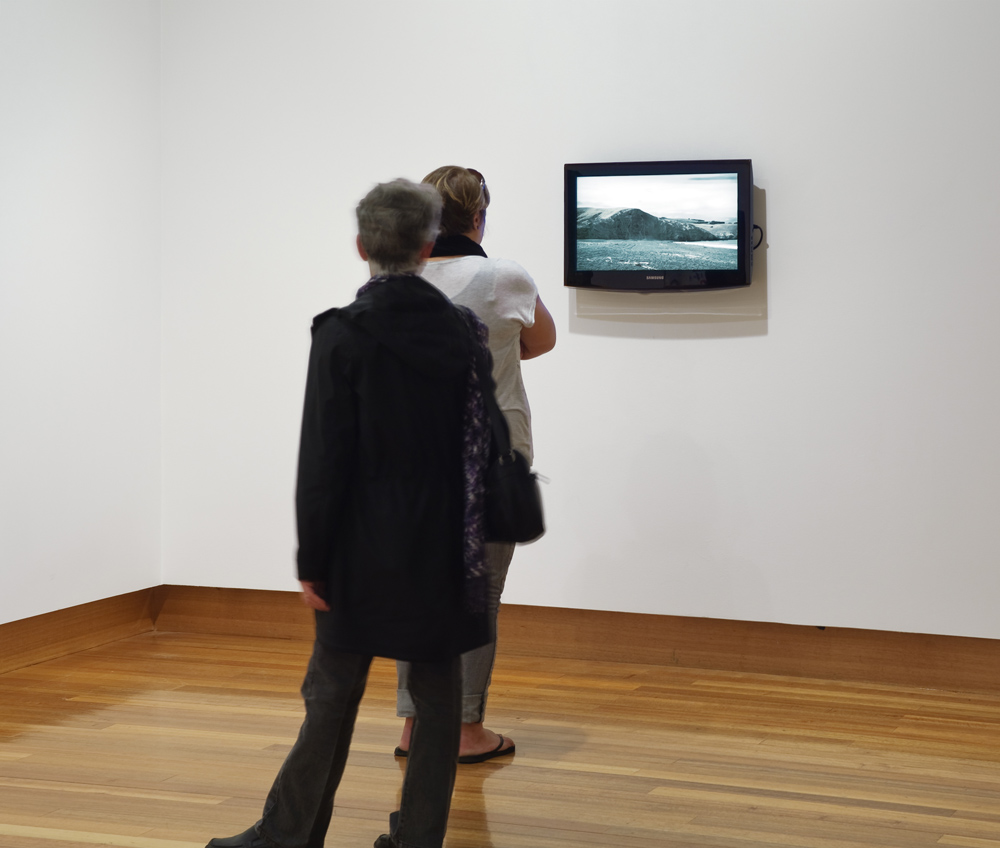Cat Auburn made the video, ‘Crying Cliffs’ during her time on the Olivia Spencer Bower Fellowship in Christchurch (NZ). She conceived of a landscape weeping tears when visiting the long strip of narrow land bounded on one side by Lake Ellesmere and the other by the Pacific Ocean.
Exhibitions: 2010, Uncanny Valley, Christchurch Art Gallery Te Puna O Waiwhetu, NZ; 2012, Auckland Film Archive, Auckland, NZ; 2022, Masons Screen, Wellington, NZ.
Cat Auburn (2010). Crying Cliffs. film (10:15).

Cat Auburn (2010). Crying Cliffs. Installation image from Uncanny Valley (2010), Christchurch Art Gallery Te Puna o Waiwhetū. photo credit: John Collie
‘Crying Cliffs’ is often exhibited with an excerpt from the novel, ‘One Hundred Years of Solitude’.
As soon as José Arcadio closed the bedroom door the sound of a pistol shot echoed through the house. A trickle of blood came out under the door, crossed the living room, went out into the street, continued on in a straight line across the uneven terraces, went down steps and climbed over curbs, passed along the Street of the Turks, turned a corner to the right and another to the left, made a right angle at the Buendia house, went in under the closed door, crossed through the parlor, hugging the walls so as not to stain the rugs, went on to the other living room, made a wide curve to avoid the dinning-room table, went along the porch with the begonias, and passed without been seen under Amaranta’s chair as she gave an arithmetic lesson to Aureliano Jose, and went through the pantry and came out in the kitchen, where Ursula was getting ready to crack thirty-six eggs to make bread.
“Holy Mother of God!” Ursula shouted.
She followed the thread of blood back along it’s course, and in search of its origin she went through the pantry, along the begonia porch where Aureliano Jose was chanting that three plus three is six and six plus three is nine, and she crossed the dining room and the living room and followed straight down the street, and she turned first to the right and then to the left to the Street of the Turks, forgetting she was still wearing her baking apron and her house slippers, and she came out onto the square and went into the door of a house where she had never been, and she pushed open the bedroom door and was almost suffocated by the smell of burned gunpowder, and she found Jose Arcadio lying face down on the ground on top of the leggings he had just taken off, and she saw the starting point of the thread of blood that had already stopped flowing out of his right ear.
One Hundred Years of Solitude (1967) by Gabriel García Márquez
